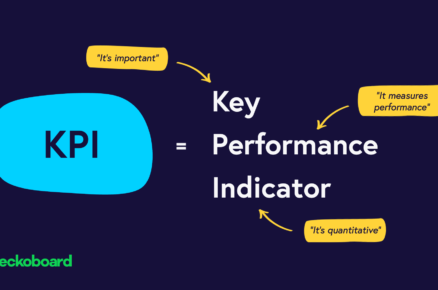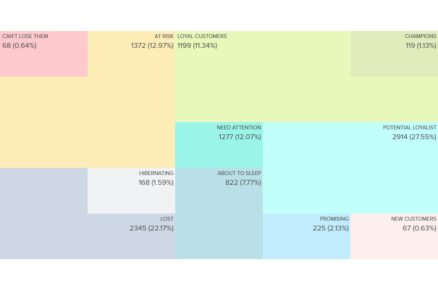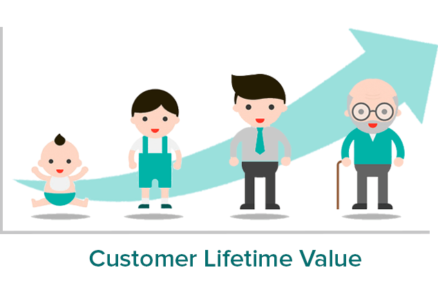Profit Model Analytics – A Banking Example
The goal of every business is to make a profit and so, by extension, the goal of every strategy should be to move that business towards optimal profitability. To this end, all strategists should first identify those actions which a business undertakes in its day-to-day operations that enable to it make a profit. These actions are called profit levers. As with mechanical levers, an adjustment made to a profit lever will result in a change in profit.
Although it is possible for profit levers to reinforce one another, it is more common for them to compete. One can therefore not optimise total profit by optimising each profit lever in isolation. To do so, one must take into account the nature of interactions between profit levers. A lending business is no different. One can not evaluate the risk of a loan portfolio without taking into account the interest rate charged; one can not adjust the bad-debt collection strategies without considering the impact they have on customer service strategies and one can not build a new scorecard without knowing the cost of business it will turn away.
The relationships between each of a business’ individual profit levers can be mathematically – or graphically – represented in a profit model. The profit model for almost any business can be started as a function of sales revenue less all variable and fixed costs. A bank is simply another form of business – one that makes its profit by borrowing a large lump sum of money at a low rate of interest, breaking it into multiple smaller sums and lending those sums on to its customers at a higher rate of interest. So, although terminology might change when one considers a banking example, the concepts remain identical.
A bank typically earns revenue from fees and interest on outstanding balances, pays variable costs that include the cost of holding capital and the cost of bad debt as well as the various fixed costs associated with the provision of banking services. The same simplified profit model can therefore be expresses for a bank as a function of total fee and interest revenue less bad debt write-offs, capital holding costs and the fixed costs associated with operations.
Profit = Revenue – Bad Debt – Capital Holding Costs – Fixed Costs
Terms such as ‘revenue’ and ‘bad debt’ are too nebulous to direct specific actions and so further deconstruction is required. Revenue is a function of total outstanding loan balances, the ratio of customers repaying their loans to those in default and the interest rate charged. In a similar way, it is possible to further simplify the total outstanding loan balances as a relationship between total loan balances offered to customers and the average rate at which those available balances are actually utilised by customers.
Revenue = (Loan Balances Offered x Utilisation Rate) x Repayment Rate x Interest Rate
Repeating this process for each of the other factors brings us to a point where we have a basic profit model for a bank – or at least for its lending operations.
Profit = (L*U*(1-BR))*i – (L*U*BR) – (L*U*CoC + L*(1 – U)*BHR*CoC) – FC
Where:
L = Loan Balances Offered
U = Utilisation Rate
BR = Bad Rate
i = Interest Rate
CoC = Cost of Capital
BHR = Basel Holding Rate
FC = Fixed Costs
This profit model is, however, not yet complete. We can see the directional impact that an increase in loan balances will have on each profit lever – an increase in revenue, bad debt write-offs and capital holding costs – but not by how much each factor will increase; let alone their combined impact. This framework must still be customised from three sources – financial information, an analysis of existing data and test-and-learn analytics.
Financial data is usually readily available and easy to access. In this example, it should be possible to quickly determine the interest rate charged by the bank and the interest rate it pays its funders. With a little more effort – and a reliable data warehouse – it should also be possible to analyse the bank’s historical data and calculate from that the total loan balances offered, the average utilisation rate and the average bad rate for this product. So, even without sophisticated analytical capabilities, an organisation should be able to populate an ‘as-is’ view of the profit model template for each of its major products.
Returning to our example, it should be easy enough to find the figures needed to determine that the product in question is generating nearly three million Euro in profit
Assuming:
L = €100,000,000
U = 75%
BR = 2%
i = 17%
CoC = 10%
BHR = 20%
FC = €300,000
Profit = (100,000,000*75%*98%*17%) – (100,000,000*75%*2%) -(100,000,000*75%) *10%) – (100,000,000*25%*20%*10.5%) – 300,000 = 2,695,000
Knowing the ‘as-is’ view is important to a business but not as important as having a tool to evaluate and compare the outcome of potential future actions. This simple model can be used to determine the impact that a new strategy will have on profitability but only if we assume that all the other factors remain unchanged. For example, increasing the interest rate by a percentage point will increase in profit by three-quarters of a million Euro.
Although this assumption (ceteris paribus) is common in economics, it does not present a true reflection of reality. We know that an increase in interest rates is likely to have a consequential impact on, among others, the utilisation rate and the risk of the portfolio. Thus, using the profit model becomes more complex when the impact of a change is considered.
What is likely to happen if a bank offers all its customers a 10% increase in available balance? This is not a question that can be answered without an understanding of how the model performs in a changing environment. The performance of the model in a changing environment is known as ‘marginal performance’ and can only be calculated using a forward-looking analytical technique. Test-and-learn analytics is a technique that gathers real-time marginal performance data in a series of small and controlled experiments. The results of these experiments can then be used to populate the profit model which can, in turn, be used to extrapolate the likely impact the new strategy will have when rolled-out on a large-scale.
In our example it was easy to use historical data to calculate that, on average, seventy-five percent of the available loan balance is utilised. But this fact does not necessarily extend to say that seventy-five percent of any increased balance will also be utilised. In fact, it is likely that the marginal utilisation will be significantly lower than that. A test must therefore be constructed to determine, in a controlled environment, the marginal utilisation rate.
A test of this sort would start with the random selection of group of customers to be tested. Some of these customers will be contacted and reminded of their existing available balances while the others will be contacted and offered a further 10% in available balances. By monitoring the relative performance of these two groups it would be possible to calculate both the marginal utilisation (what portion of the new balance was taken up) and marginal risk (what portion of the new balances ended in default). The only ‘new’ cost in this scenario would be those costs directly linked to the campaign.
Profit = (L*MU*(1-MBR))*i – (L*MU*MBR) – (L*MU*CoC + L*(1 – MU)*BHR*CoC) – FC
Assuming:
L = Loan Balances Offered = €10,000,000
MU = Marginal Utilisation Rate = 30%
MBR = Marginal Bad Rate = 35%
FC = Fixed Costs = €15,000
Returning to the profit model it is now possible to calculate that this strategy, because it leads to a lower marginal utilisation and a higher marginal risk, actually leads to a decrease in overall profitability. In this format a profit model becomes a truly useful tool.






